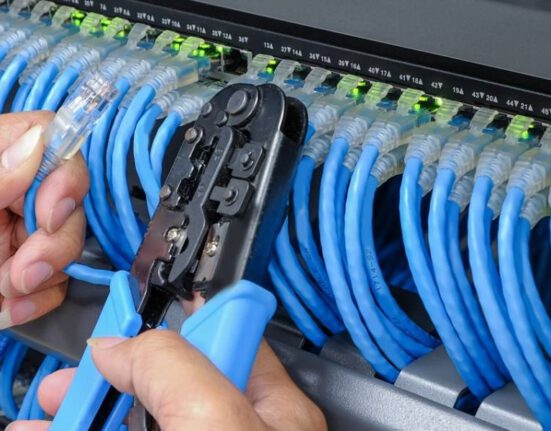A LAN connects all computers in a network together, usually with a switch or router. The switch or router governs the flow of data and resources across the network. The switch has multiple ports that are connected together through ethernet cables. It also enforces network policies and optimizes performance of connected devices. Network switches are available in both managed and unmanaged versions. A managed switch will have more features, but an unmanaged switch is usually cheaper.
LANs are faster than WANs. They support data transfers up to 1 Gbps. This makes them ideal for high-definition video conferencing, streaming, and other data-intensive tasks. They also enable businesses to schedule meetings and access remote business data. With a LAN, everyone in a business is connected at the same time and can share the same resources. In addition, LANs enable employees to work together and collaborate more efficiently and securely.
Local area networks use ethernet or coax cables. The ethernet cable is the most common type of LAN. The coax cable is primarily used for radio signals and for building internet connections. A coax cable is used to join radio transmitters with antennas, but can also be used to create a local area network. These cables are more expensive than unshielded versions, however. Shielded cables require extra material and different manufacturing processes.
Wireless connectivity has significantly increased the types of devices that can connect to a LAN. With this technology, almost anything can now be connected, from phones and PCs to stereos and speakers. Even security cameras and home thermostats can be connected to a LAN. There are two types of LANs: client/server and peer-to-peer. In client/server LANs, the various client devices connect to a central server to manage network traffic.
The LAN has been used for computers for decades. The first commercial LAN was installed in a bank in New York. It was named after IBM and used a token-passing scheme. However, later IBM adapted a twisted-pair protocol and used it for its LAN. Ethernet was adopted as an IEEE standard and became widely used in commercial LANs. It is still the basis for most commercial LANs today.
There are two types of network connections: WAN and LAN. WANs are used in public environments, while LANs are used for localized networking. LANs are more complex than WANs and offer more flexibility and speed. WANs are also used for public connections, while LANs are used for private networks. It is important to know the difference between a LAN and a WAN. When deciding which network is right for you, it is important to understand the difference between the two.
LAN stands for local area network, and it is a group of computers that are connected to each other. LANs are typically made up of several computers that are connected to each other through an Ethernet cable or WiFi. In fact, even your home WiFi connected devices are part of a LAN. These networks are protected by firewalls, which prevent unauthorized devices from accessing the network. LANs were first used in universities and colleges in the 1960s to catalog library collections, schedule classes, record student grades, and share equipment resources.
Another type of LAN is wireless. This type of network is commonly used in home environments, as it allows you to access network resources without being tethered by cable. WLAN saves time and money on installation, as it eliminates the need for expensive hubs and cable drops. It also has some disadvantages, such as low data transfer rates. In addition, WLAN is battery-intensive, and has a fluctuating performance. While wireless LANs are becoming more popular, they can be difficult to secure and maintain.
As you can see, the advantages of LAN over WAN depend on the purpose of the network. The former is more secure, while the latter is more expensive. However, both types of networks are available in a wide range of applications and sizes. However, it is important to understand the difference between the two and what each type can do for you. This is because LANs can connect more than just a computer, so you should choose the right type for your environment.








Leave feedback about this